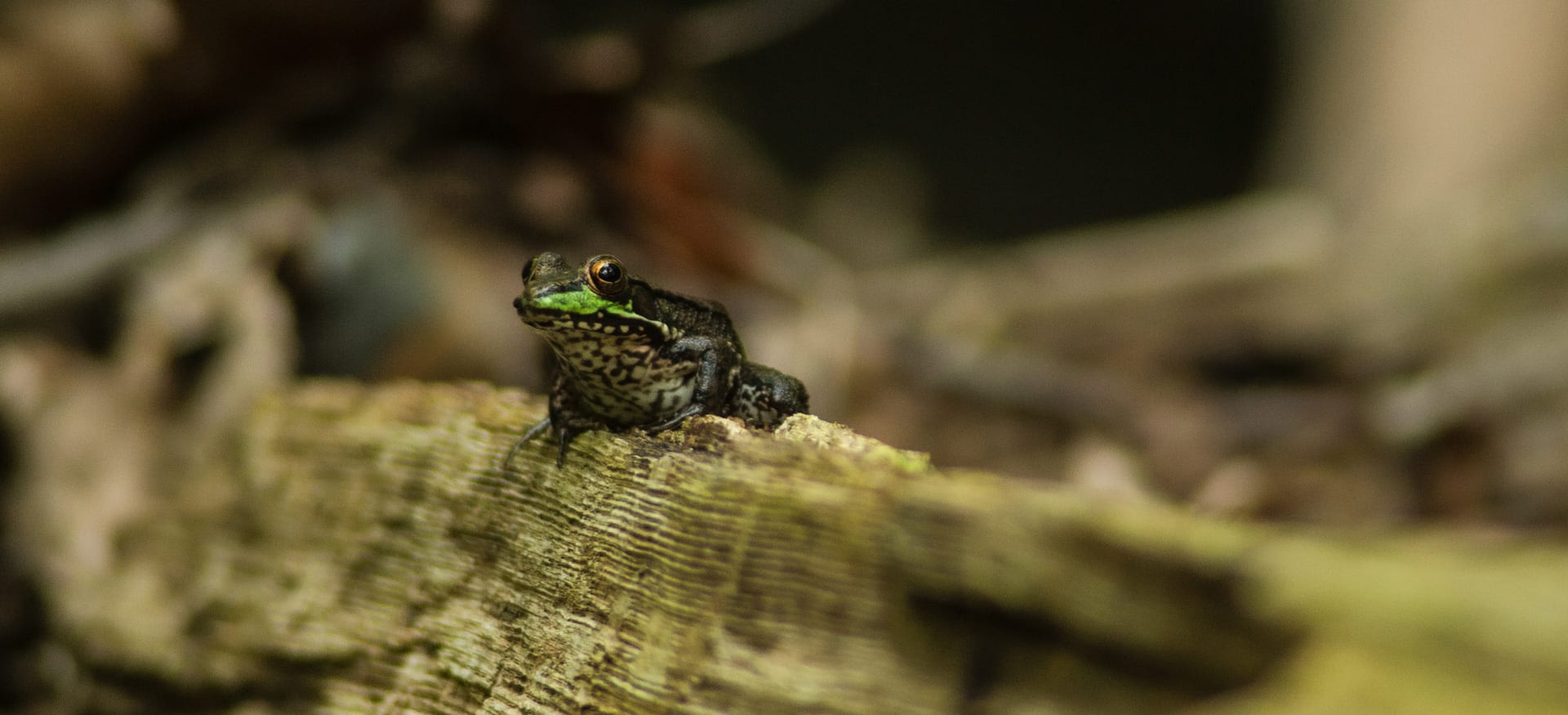Reptiles and amphibians are a diverse and fascinating group of animals to get to know. This group is often called “herps” from “herpetology,” the study of amphibians and reptiles. While they are very good at hiding, some herps may be seen or found in the Forest more frequently than most forest mammals. See our habitat survey for a complete list of Black Rock Forest amphibians and reptiles.
Reptiles are usually four-legged (except for snakes and some lizards). They have three to five toes with claws on each foot. Their skin usually has horny scales and sometimes bony plates. Most of these animals lay eggs with hard or leathery shells. The young look like miniature versions of the adults. Turtles, lizards, snakes, alligators, and crocodiles are some well known examples of reptiles.
Amphibians are also usually four-legged, with a few two-legged species as exceptions. Tadpoles are another exception, with no limbs when very young, but they eventually metamorphose into four-legged frogs. Amphibian skin is soft and moist with no scales. The skin may be smooth, except for toads, which have skin that is rough and wart-like. There are no claws on the toes of amphibians. One way to distinguish a salamander from a lizard is to examine the toes for claws. Amphibian eggs are usually contained in jelly-like masses found in water. The young typically go through an aquatic larval stage. Frogs, toads, and salamanders are examples of amphibians. Eastern newts, common in Black Rock Forest, differ in that their larvae live on land (red efts) and the adults return to water.
Most reptiles and amphibians are elusive, and very often are found living underground. Rocks, logs, slabs of wood, and other objects serve as good hiding places for them. Aquatic turtles, such as the Forest’s painted turtles, can be seen basking on logs on sunny days. Wet weather promotes more activity by amphibians, which need to keep their skin moist. Red efts are common across the Forest after rains, criss-crossing trails in abundance. You will have much better luck seeing reptiles on sunny days, when these exothermic animals bask in the sun to warm up.

